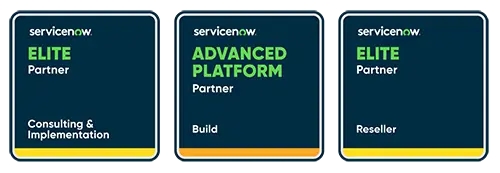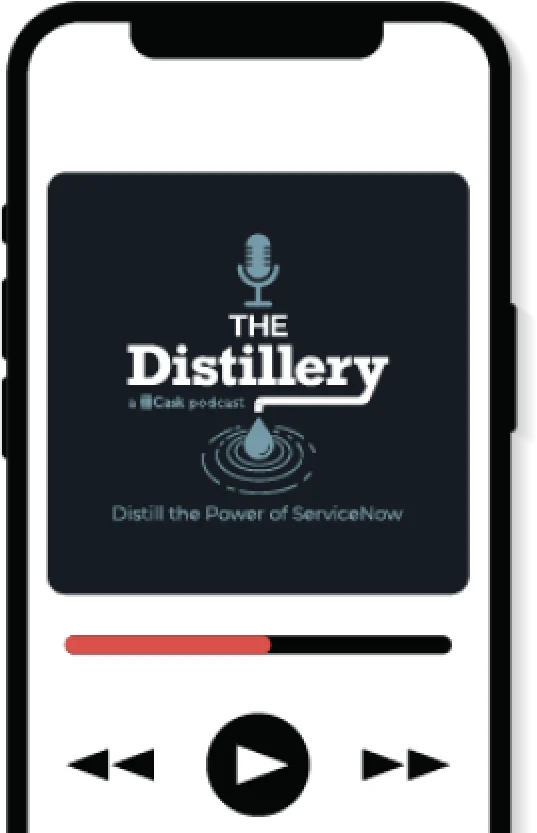When an individual cannot find or trust existing reports, they simply create their own. Organizations lose productivity when individuals create putative reports to get data needed for their role; this is waste. This creates conflicting data contexts through too many resources making reports and does not adhere to ServiceNow reporting best practices.
Conflicts and inconsistency in the story these reports tell create distrust across report owners and consumers regardless of their organization level.
This happens when data is taken from the same underlying data (source) and viewed from different moments in time and/or filtered on different data attributes. Inconsistency leads to the perception that more reporting will correct the issue, but too many different report contexts on the same underlying data can cause the problem to worsen.
In order to put their departments in the best light, employees sometimes design reports to portray a good, rather than robust, picture. Reports that only show a positive perspective of performance in an area of an organization often masks potential problems or opportunities for improvement.
Data is neither good nor bad, the output of a report should serve to drive a pre-determined and well-documented action; the action may be corrective in nature.
When reports do not measure against a predefined target, which is not a ServiceNow reporting best practice, the data has no contextual meaning—neither positive nor negative. When this occurs, the output of the report is simply amorphous data or numbers that can’t provide a story. When data has no meaning, clear and timely actions cannot be taken because these reports have no organizational value.
Data that is exported into spreadsheets, PowerPoint presentations, or other off-platform mediums immediately become stale. While sharing information is critical for timely action to occur in response to report outputs, the timeliness of data is of equal importance to ensure responses are appropriate in context to the state of the data. Responding to stale data can cause confusion and distrust in an organization. Exporting data is still useful when demonstrating historical, lagging data to personnel who may not have or need access to the system of record where the data is mastered.
5 ServiceNow reporting best practices
Too many resources creating reports and too many different report contexts on the same underlying data can lead to distrust within the organization. Reports designed to portray a good, rather than critical, picture and reports that do not measure against a predefined target often mask potential problems or opportunities for improvement. Stale data confuses the context of the data and leads to misunderstandings.
A number of ServiceNow reporting best practices that focus on finding the right approach to building reports based on the needs of the organization and a thorough understanding of the key metrics and KPIs used for measuring are as follows:
1. Define goals and objectives that require measurement
Never create reports simply for reporting’s sake. Always define the goals and objectives that require measurement. These goals can be areas or activities of a process where the organization expects to see specific levels of performance. For example, response to an incident by an assignment group, resolution of an incident, lead time for a change, etc. Measurements provided by reports should align to the goals or objectives and be managed by central Analytics Program Owners or an organizational reporting authority. This authority should control who creates reports, alignment to goals and objectives, socialization of reporting artifacts, and maintenance of artifacts to ensure continued value.
2. Determine leading and lagging indicators of the highest value
Leading and lagging indicators both provide value; however, value is in context to the goal or objective measured and the desired action to be taken. The majority of measures created by organizations are lagging indicators, meaning the data is output-oriented (the data is at the end of its life cycle). Lagging indicators are easy to measure and hard to influence; these are retrospective measures. A common example of a lagging indicator is incidents resolved in a month. This is easy to measure, but the output cannot be influenced or changed.
Leading indicators, or input-oriented, measure a business process while it is still in an active state. These are harder to measure but easier to influence and are prospective measures. A common example of a leading indicator is incidents not updated in one business day or the average incident backlog age.
3. Define data context with targets and/or thresholds
Another ServiceNow reporting best practice is to always define the context of report output using a target, threshold, or both. A target defines the desired minimum performance of a measurement. A threshold defines the upper and/or lower limit of performance; usually in relation to the target (if applicable). Thresholds should be used to provide an early warning that performance may be at risk in relation to a target. For example, if an organization sets a threshold of incident resolution to be 4 days at 90%, thresholds may be set at 88% (lower) and 92% (upper). If performance falls below 92%, the organization can respond and ensure performance remains at or above the target. If performance falls below 88%, the organization can respond to recover performance and drive to achieve the target prior to the close of the reporting period.
The objective of performance where targets are established is for the organization to perform at, or slightly above, the target. If performance is well above the target (contextually), the target should be re-evaluated and reset - this is an indicator of potential over investment. The same is true when the organization consistently performs below the target, this is an indicator of underinvestment or unrealistic expectations.
It is critical that targets are monitored for relevance, where a target is unachievable or easily achieved, focus and/or trust in performance to the target will be lost.
4. Less is more
When an individual performer in an organization cannot quickly locate or clearly understand what a report is designed to provide, they will create their own report. The value of an Analytics Program Owner or reporting organization is realized. It may be true that anyone can create a report in ServiceNow; however, this does not mean they should. The time spent by individuals in the organization creating reporting artifacts where information already exists is waste. This also creates confusion and division due to distrust of data between report owners. ServiceNow reporting best practices allow for the Analytics Program Owner or reporting organization to singularly control all master reports and dashboards, maintain data alignment to organizational objectives, and communicate the existence, use, and expected actions/outcomes of reports to the enterprise.
5. Leverage ServiceNow content packs
ServiceNow’s content packs are pre-created content such as reports, Performance Analytics widgets, and dashboards that an organization can activate to reduce time to value for reporting. These content packs contain common reporting content that can be leveraged as-is or quickly updated to align the measurements to your organization’s goals and objectives. It is recommended that all content in the pack be reviewed for relevance to your organization, updates required, and gaps that exist. Gaps should be filled with reports by the Analytics Program Owner or reporting organization.
This way, data remains in the platform and is never stale and reports are always real-time and analytics widgets are near-real-time (based on data collection job settings).
Results of implementing ServiceNow reporting best practices
Adhering to ServiceNow reporting best practices enables your organization to rally around a common set of foundational reporting. The practices described in this blog will alleviate confusion, reduce waste and time-to-value, and help align your resources around the goals and objectives that are important to your enterprise. Applying governance around your reporting through an Analytics Program Owner or centralized reporting organization will further enable a single source of truth to be created and allow for trust in your data to occur organically.
Cask understands that the world moves fast, but information moves faster. You need data in a hurry, and company-wide automation is the answer. If your business can’t keep pace, we can guide you through a strategic transformation to optimize your operational efficiency and assist you in complying with ServiceNow reporting best practices.
We’re with you for what comes next
You're working in a rapidly shifting environment.
Global dynamics, AI advancements, heavy competition–the only certainty is change.
We get it. And we’re here to help you harness the full potential of ServiceNow to simplify transformation.
Let's navigate the future together.



Optimize reporting with ServiceNow
Cask can guide you in mastering ServiceNow reporting. Enhance your IT reporting efficiency to streamline processes, define clear goals, and manage data effectively with ServiceNow’s best practices.
We’re with you for what comes next
You're working in a rapidly shifting environment.
Global dynamics, AI advancements, heavy competition–the only certainty is change.
We get it. And we’re here to help you harness the full potential of ServiceNow to simplify transformation.
Let's navigate the future together.



Recommended articles
LET'S INNOVATE
Book a conversation
Cask expertise, on tap, to understand and align to your unique challenges and desired outcomes. Our team will contact you to better understand your needs and set up a meeting with Cask advisors, aligned to your goals.



Sign up for our Distillery Podcast
Stay up to date with the latest episodes






